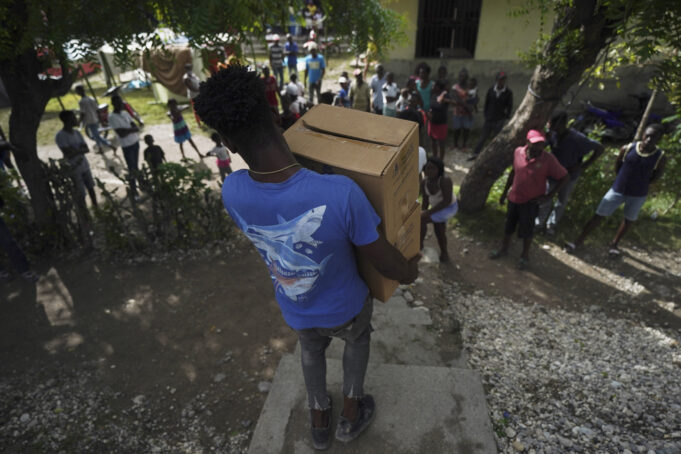by Naba’a Muhammad, Nisa Islam Muhammad and William P. Muhammad
Cynthia McKinney, a former U.S. congresswoman from Georgia, can quickly recall when a massive earthquake struck Haiti though it was 12 years ago. She argues President Barack Obama’s administration allowed the continued exploitation of the Black nation’s devastated infrastructure and economy under the guise of U.S. supervised international aid.
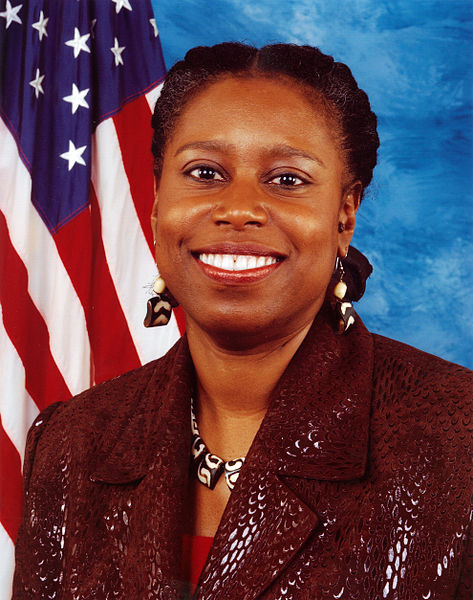
It smacked of political and economic opportunism, she said.
“The Obama earthquake was very interesting in that it became the platform for Bill Clinton to raise at least a billion dollars and for none of that money to be felt by the people of Haiti for whom the money, ostensibly, was raised,” said the former Congressional Black Caucus member.
“What I think the importance of the Obama earthquake is that it exposed what was, I guess, previously a secret. And that is if you give money through these organized, accepted, official channels, there is no guarantee that that money is going to be spent. So what it means, even to today, is that emergency infrastructure is something that we have to build ourselves,” Ms. McKinney continued.
“Despite the fact we pay taxes, the emergency management structures don’t perform for Black people,” she explained. “We have to be prepared to step in to save ourselves because, quite frankly, it has been demonstrated that the government is not going to do it.”
January 12, 2022, marked the 12th anniversary of the earthquake that devastated Haiti. Its aftermath is still felt, fueling economic woes, political insecurity and keeping the world’s first Black republic reeling.
And, while billions have been raised and even allocated in the name of Haiti, a dozen years later little of that money has gone to help.
According to unicef.org, the earthquake in 2010 leveled at least 300,000 homes, including Haiti’s presidential palace, and displaced 1.6 million people.
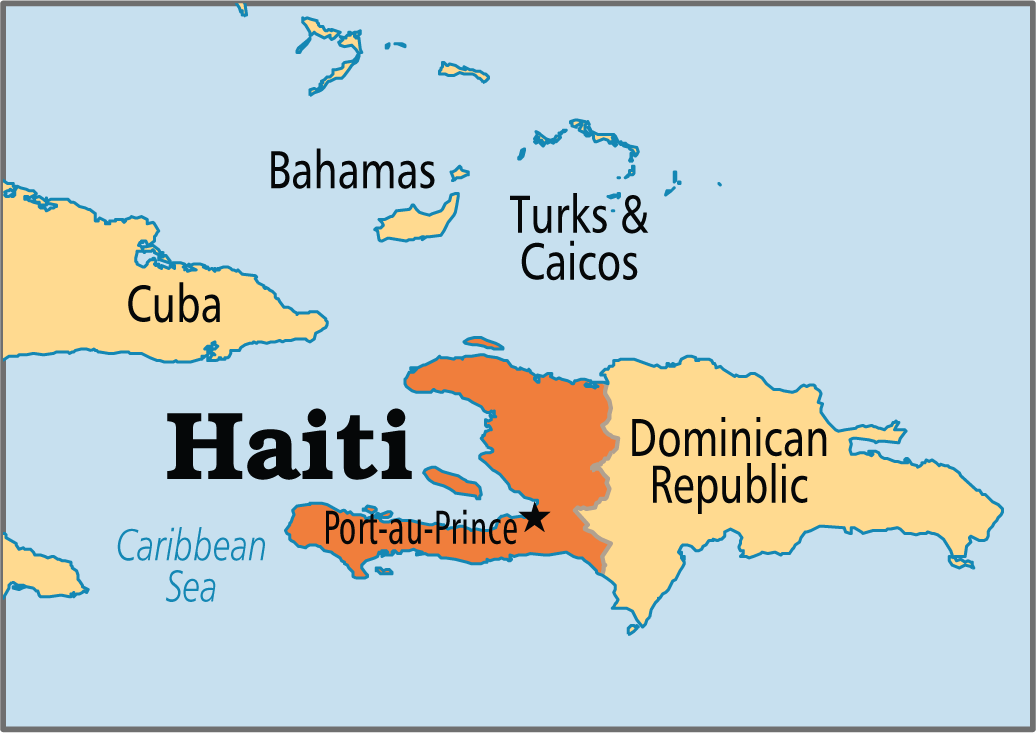
Describing the vital need for medical, food, water, and sanitation assistance for the suffering masses of Port-au-Prince and beyond, William Leslie Balan-Gaubert, a Chicago-based advocate and scholar of both Haitian and Haitian-American concerns, said insufficient government resources and damaged infrastructure prevented proper deployment of emergency services to an already overpopulated city.
Corruption from an indifferent elite and business class, along with the top-heavy administration costs associated with various non-profits and so-called charities operating throughout the country were problematic, said Mr. Balan-Gaubert. And, he charged, the Haitian government, and other parties were neither willing nor able to rise above the lust to feed at the public money trough.
“One of the reasons why so many people died in Port-au-Prince proper is because since the late 1950s and early ’60s, a lot of the Haitians were in the rural areas (and) converged to Port-au-Prince because there were a lot of businesses that were opening in Haiti as a result of the Duvalier regime, the Poppa Doc regime, having concessions with international companies, so Port-au-Prince became overpopulated,” he explained. There was a desire to shift the population from rural to urban areas and offer cheap labor to corporations, said Mr. Balan-Gaubert.
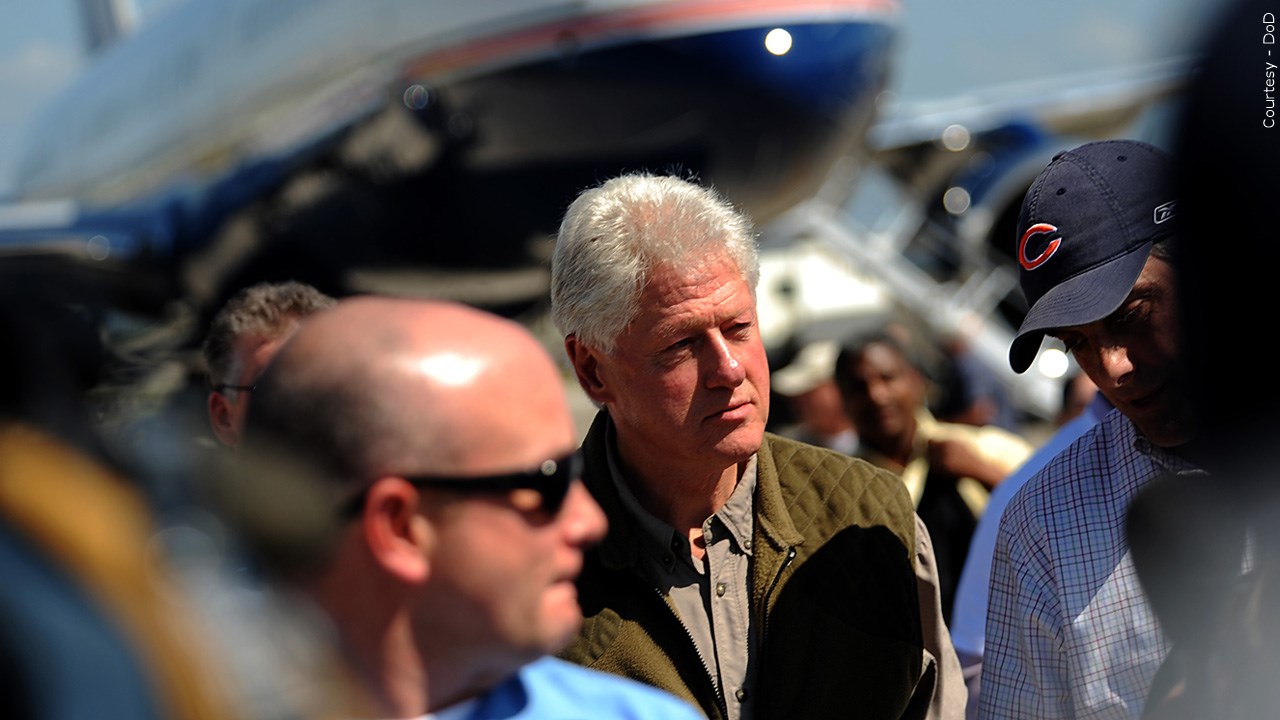
The changes ultimately may have done Haiti more long lasting harm then long-term good.
“I coined the term a long time ago, ‘sociocide,’ the wanton, intentional, destruction of a society, so all of the institutions of a society—family, church, and organizations—these are the things that help a society run and function, but these are destroyed and they are intentionally destroyed,” said Ms. McKinney.
She referred to how Haiti’s rice industry in the Artibonite Valley was decimated as rice from Arkansas flooded the country. A massive cholera epidemic caused by the dumping of human waste and sewage into nearby water sources by Nepalese troops under United Nations command added another major crisis, she said. The United Nations peacekeepers were supposed to be in the country to help. Instead, they contaminated water and abused Haitian women and children.
“It took the UN a number of years to acknowledge the fact that it was basically their soldiers that were defecating in drinking water sources, creating something that had never existed in Haiti before,” Ms. McKinney said.
The nation was already facing challenges with a job’s scarcity and 59 percent of the population living on less than $2.41 a day. The country’s history of colonization, then occupation coupled with centuries of exploitation by Spain, France, and especially U.S. meddling stymied Haiti’s success. The catastrophic 7.2 earthquake lasted 35 seconds and was felt as far away as Cuba and Venezuela. It left an estimated 316,000 dead and 1.5 million injured.
The economy was still suffering, jobs were still scarce, people still had too little too eat when another 7.2 earthquake struck last August.
“The economic situation of the Haitians has become more and more difficult with increasing levels of poverty. The situation is very alarming even now, years after the earthquake. Therefore, we have to figure out a way to come together to find a solution so we can address these issues,” said Professor Lavroiser Cherisier from Bossal University.
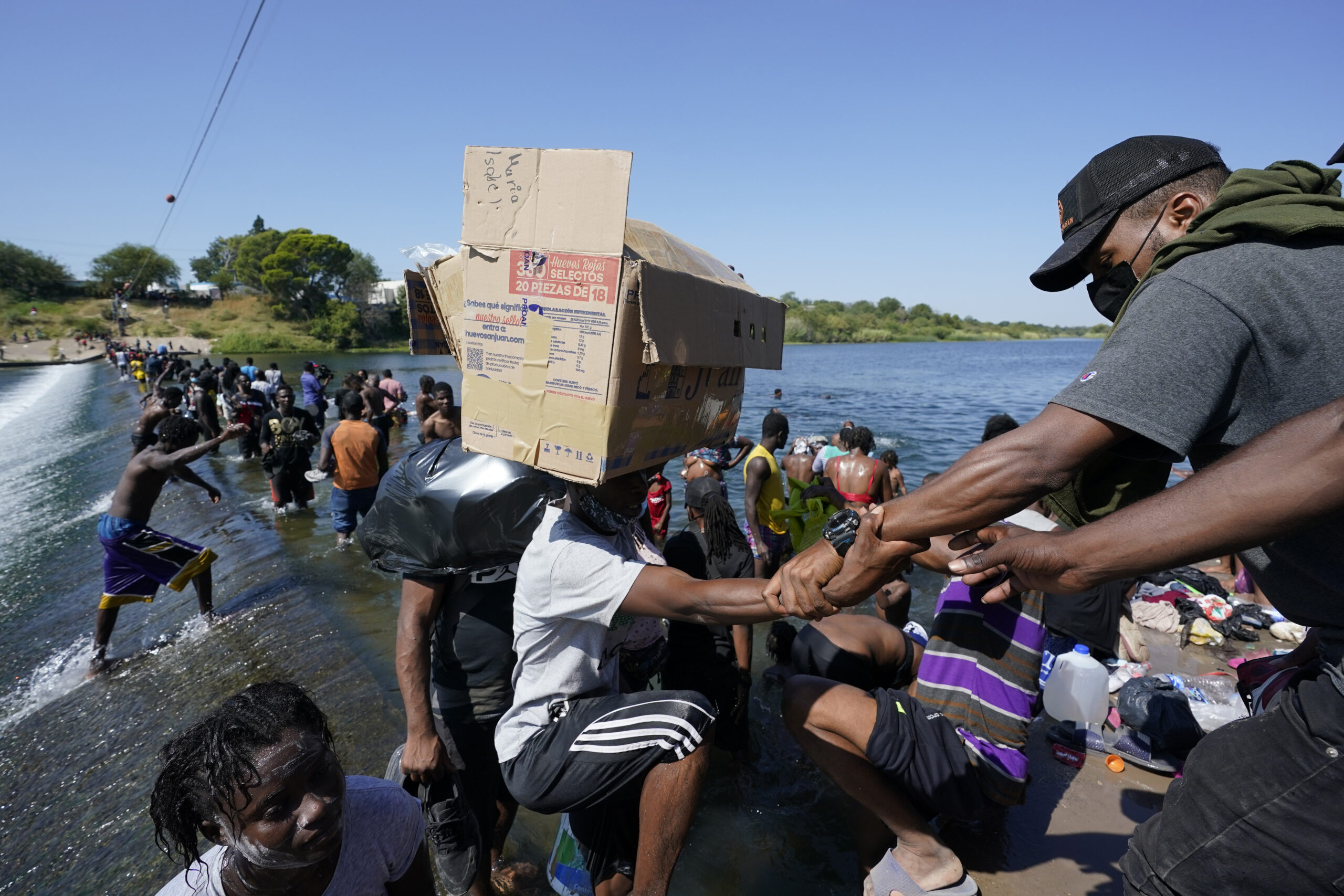
While outsiders, foreign governments, non-profits and international agencies have seemingly free rein in Haiti, the proud Haitian people and Haitian Diaspora are still locked out and must fight for money that is supposed to help them progress.
Paul Farmer, United Nations deputy special envoy for Haiti, wrote in a special report on Lessons from Haiti in 2012, “Of the $2.6 billion committed or disbursed by bilateral and multilateral donors to humanitarian relief efforts, less than one percent was provided to the government of Haiti; Of the $1.1 billion channeled to international and Haitian organizations participating in the UN flash appeal in 2010, Haitian organizations received only 0.14 percent ($1.6 million).”
“Of the $1.5 billion in recovery and development funding disbursed by bilateral donors, only six percent ($94.8 million) was disbursed as budget support to the government; Of the billions of dollars of procurement contracts issued by one of the top five donors following the earthquake, only 2.4 percent were provided to Haitian businesses.”
The U.S. Agency for International Development reportedly spent more than $2 billion dollars on humanitarian relief and long-term development in Haiti.
A report by the Center for Economic and Policy Research released Jan. 12, examined the USAID’s disasters in Haiti. “Twelve years ago, the U.S. government vowed to ‘build back better’ in Haiti,” paper co-author Jake Johnston said. “But the U.S. response is now remembered for diverting millions of dollars to Beltway-based contractors while bypassing Haitian organizations, for its lack of transparency, and promises undelivered while people in Haiti suffered.”
The report identifies several key problems in USAID operations that have persisted despite efforts at reform:
- USAID is overly reliant on a small cadre of largely US-based contractors.
- USAID staff levels remain woefully inadequate.
- USAID reform efforts have rarely been accompanied by legislative action.
- Organizational culture and systemic racism also play a role.
The authors found only three percent of USAID spending went directly to private companies or organizations based in Haiti. More than half of all USAID spending went to a handful of firms in Washington, D.C., Maryland and Virginia.
The top two recipients, Chemonics International and Development Alternatives Inc., are for-profit companies that have received 20 percent of all USAID contracts and grants awarded for work in Haiti over the past decade-plus and are two of the largest recipients of USAID funding worldwide.
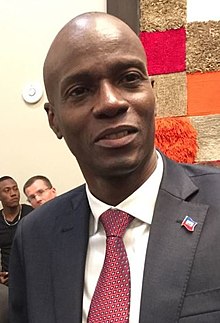
An internal and external struggle
Twelve years after the earthquake Haitians are faced with increased violence, gang warfare, kidnappings, and the 2021 assassination of President Jovenel Moise.
“Haiti has become a foreign state to citizens of Haiti,” commented Joseph Makendal of the Respect for Life Foundation located in the U.S. and Haiti. He also serves as Nation of Islam liaison to Haiti. “That’s one of the reasons why we see Haitians leaving Haiti and migrating to different countries in Latin America whether it’s the Dominican Republic or Chile, or Brazil,” he said.
“They are doing anything they can to escape that inferno that has been created in Haiti for the poor Haitians. They can’t take it anymore. They’re dreaming, they have aspirations, particularly those who still remain underground. They want to find a way to migrate out of this country into another country.”
Finding a way out can be dangerous, costly, and many times lead to them being returned to Haiti. Haitian migrants made national news last November. As thousands tried to cross the Mexico-U.S. border in Del Rio, Texas, cameras captured U.S. Border Patrol agents on horses whipping Haitians in ways reminiscent of slave overseers beating enslaved Africans. Forty percent of the Blacks at Del Rio were not Haitians, they were from other countries including South America and Africa.
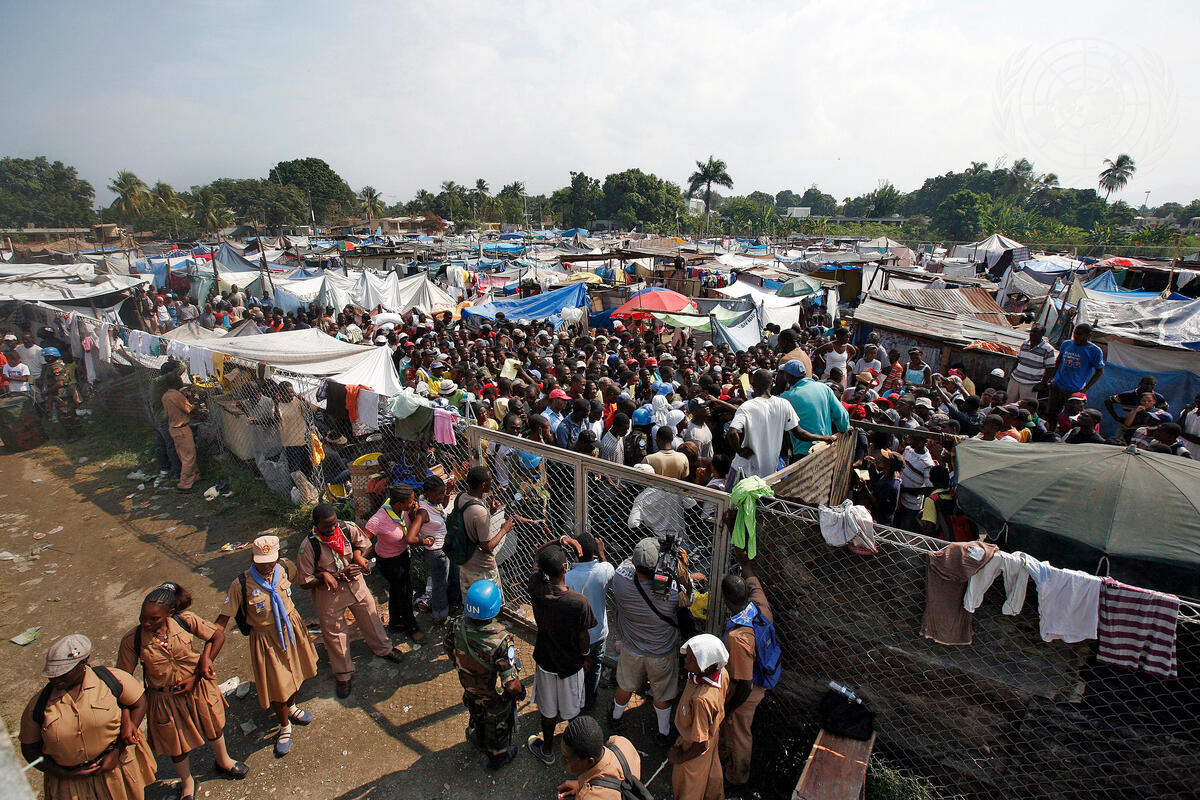
“Over 17,000 Haitians have been deported from the US,15,000 of them since the Del Rio incident. 15,000 of that 17,000 is since Sept. 19. One plane had 38 infants in it. They’re expelling, no matter the age, no matter the gender, no matter the issue, the reason that they fled,” Nana Yami, executive director of the Black Alliance for Just Immigration, told The Final Call.
“They’re expelling in violation of international law, in violation of U.S. law that says they should at least be able to make their exile claim, to tell you why they’re here. They’re not even being allowed to do that. That continues to be evaded.”
She explained how the Biden administration is not doing any better than the Trump administration in helping Haitian immigrants resettle and get past the border in Mexico where they face detention centers filled with anti-Blackness.
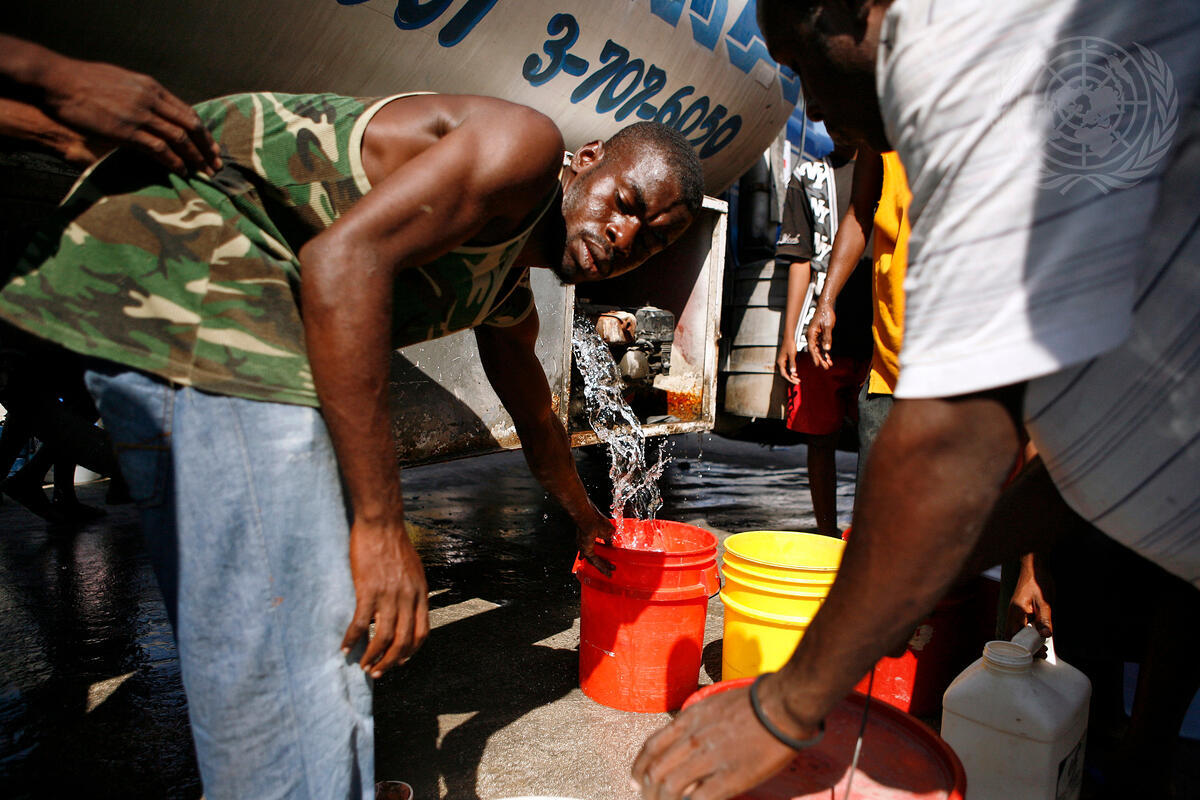
“They’re forcing (Haitians) to stay in Mexico, which of course is forcing them to be in very dangerous conditions in which people are getting robbed, getting raped, getting beaten, and obviously living in squalor,” she said.
Carmella Coqmard Muhammad, owner of Chicago’s The Foodie Spot, has family that lives just north of where the 2010 earthquake struck. Though not directly impacted they were cut off from the services of the Haitian capital Port au Prince.
“The Haitian people are so resilient. They’ve lived under pressure for so long. That is all they know, trauma, trauma, trauma. We lose people almost every day from poverty. Violence in Haiti is up due to the fact that they murdered the president. Haiti has been known to be resilient,” she told The Final Call.
“I don’t see a lot of trauma when I speak to my family. I can hear the strength in their voice. They don’t sound destitute, stressed out. They just sound like, ‘it is what it is. We learn to live like this.’ ”
Mrs. Muhammad is working with an American couple to do an adoption for a Haitian family that can no longer care for their young daughter. Respect for Life Foundation lawyers are handling the adoption.
“This little girl is so beautiful and her personality shined through the phone when we spoke. She had a hand on her hip in a picture. She was just so cute,” Mrs. Muhammad said. “I want people to know that children are available in Haiti for adoption. They need good homes.”
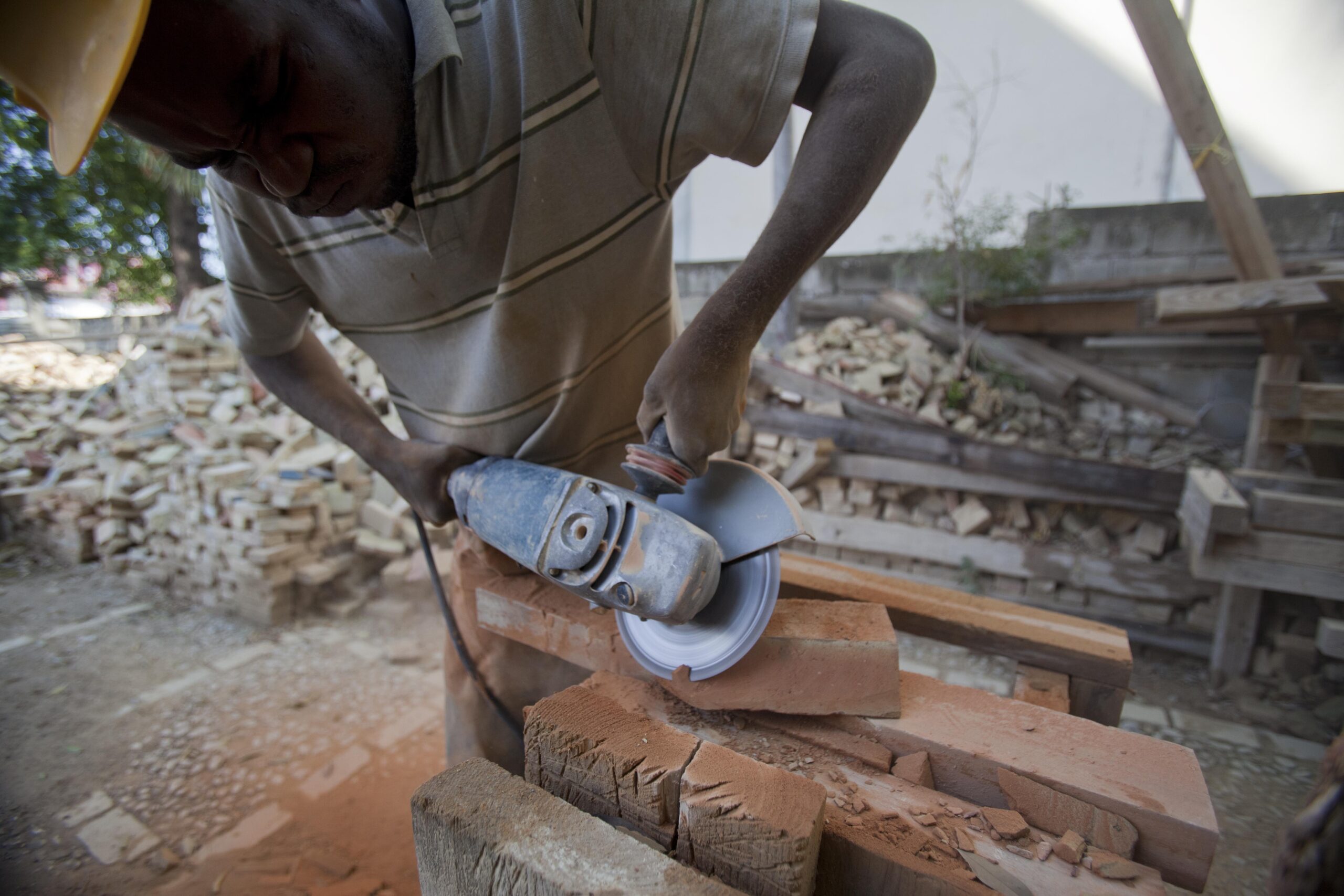
William Leslie Balan-Gaubert sees lasting challenges and suffering from 2010.
“I am actually from Port-au-Prince, the capital city, and mostly friends have been affected, but not immediate family members since (they) were outside of Haiti at that time,” Mr. Balan-Gaubert stated. “But I did have friends who did succumb to the earthquake and most people I have spoken with often talk about it like a nightmare, it happened so quickly and seemed like an eternity when it was happening, and the shock was devastating,” he said.
Countering a one-sided narrative about Haiti
“From our point-of-view, we felt that the big problem was that all the reporting on Haiti was, ‘Oh, it just seems that things are really bad there, people are being kidnapped, (and) there’s a lot of poverty that is all negative,’ but we also felt that there is obviously this huge broad movement of at least hundreds of thousands of people, certainly with millions of sympathizers, that seemed to be trying to change things for the better, to perhaps establish something new,” said Eugene Puryear, an investigative journalist.
He works with the independent outlet Breakthrough News. The podcaster dedicated to informing the public about peoples’ movements and social movements both in the United States and around the world.
He visited Haiti in March 2021. He traveled throughout the country during Haiti’s Constitution Day, which recognized the signing of the 1987 Haitian Constitution, during the post-Duvalier era. He wanted to get a more accurate view of the country and its needs, particularly in the rural areas.
“One thing that we were asking basically every single person was, what’s their message to the people of the United States? And really, to a person, who we spoke to, they said for the United States to get out of our affairs, to stop supporting Jovenel (Moïse) and to stop meddling and there was quite a bit of conversation.” Mr. Puryear said. “When we were at the big mass marches, you could certainly see it.”

Dr. Ron Daniels, president of the Institute of the Black World 21st Century and founder of the Haiti Support Project, said viewing the Republic of Haiti in a proper historic and political context is extremely important. Haiti is not only a treasure trove of cultural richness, but also of great importance to the descendants of enslaved Africans who have inherited the legacy of Haitian martyrs and heroes such as the military men: Toussaint Louverture, Dessalines and Christophe,” he said.
Under the original Haitian constitution any Black person who made it to the country was a free person. America blockaded Haiti after Black freedom fighters defeated the French in 1804 and later literally occupied the country from 1917 to 1934 using U.S. troops from the South.
“I believe, but for (a powerful spiritual force), the Haitian people would not have been able to go up against the most superior, the most powerful army of the world in that day, in the presence of Napoleon Bonaparte, and defeat them,” Dr. Daniels said. “These revolutionaries shattered the myth of white supremacy.”
In order to maintain their sovereignty after Haiti’s military victory, impoverishing Haiti over the next 218 years was the mission of major world powers, he argued. Haiti was coerced into paying $21 billion in compensation to France between 1825 to 1947, for the loss of land, the loss of slaves and their offspring, and the loss of the wealth slaves would have generated for France, Dr. Daniels, who is also a radio host and college professor, added.
“The lessons we should forever learn, is that number one, we all owe Haiti a debt, not just African Americans, but throughout the Black world, and we should be focusing our attention and some of our energy on finding ways to work with credible people in Haiti to build and fulfill the real vision of the Haitian Revolution as a democratic society as they see it and they develop it,” Dr. Daniels said.
“The second lesson to be learned is that multinational bodies not only in Haiti, but in and around the world, should listen to and be guided by the voices from multilateral bodies like CARICOM and credible voices on the ground in Haiti. The third lesson to be learned is that the winner-take-all form of government do not work in Haiti or anywhere else in the world,” he said.












